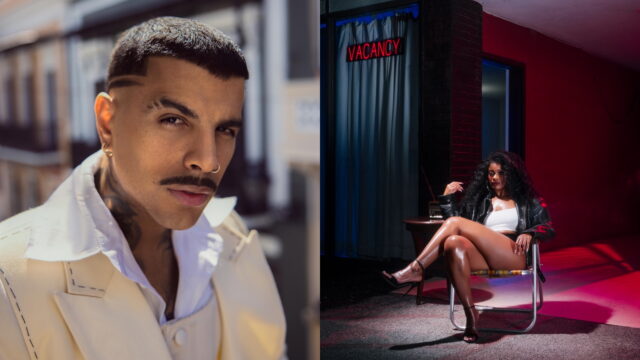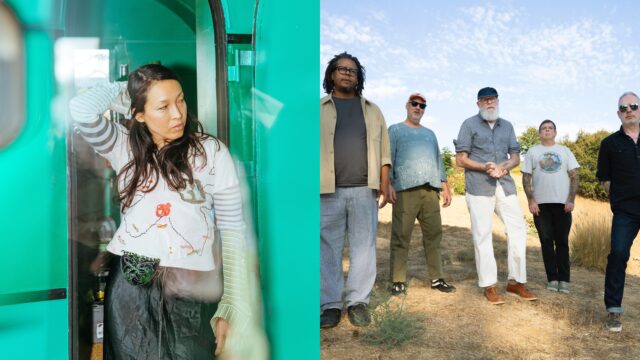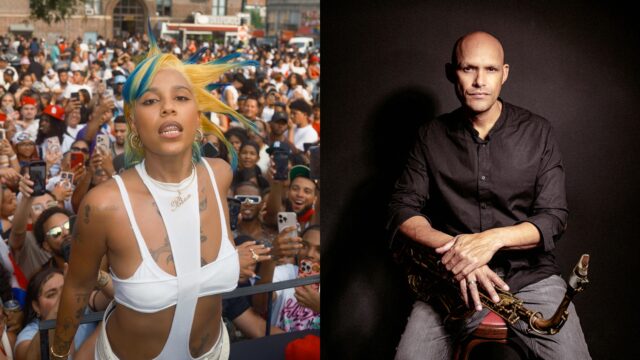The Legend of the Last Beatles Song
Giles Martin, who co-produced “Now and Then” with Paul McCartney, talks to TIDAL about how the historic new track came together — and what John Lennon is expressing through it.
by Rob LeDonne
“When you’re working on something like this, you can’t think of the scale,” the producer Giles Martin says with equal parts affability and awe in his voice. “If you do, you’d be like a rabbit in headlights and be constrained by what you’re doing.”
When Martin uses the term “scale,” he’s alluding to a project of towering importance and poignancy — a kind of musical fantasy made real for countless rock and pop fans. As we speak, the powers that be at Apple Records and Universal Music, alongside the musical Rushmorian figures of Sir Paul McCartney and Ringo Starr, are gearing up to release what is being considered the last-ever new Beatles song. Ruminated on, rumored about and salivated over for years, the track dubbed “Now and Then,” out Nov. 2, marks the final chapter of a musical legacy that began all those many years ago: a journey from the Cavern Club to The Ed Sullivan Show, down Abbey Road and on to global cultural impact that doesn’t cease.
“There’s going to be no more new songs with all four of them on it,” says Martin, 54. “This is definitive by its nature, because the nature is there are no more tracks with all four Beatles on it, and there won’t be.” And no, this isn’t some marketing tagline, like an artist who’s been on multiple “farewell” tours. “It’s a pure fact that this is the last song.”
And who better than Martin, son of late Beatles producer Sir George Martin, a man so consequential to their sound and success he was known as the “Fifth Beatle,” to shepherd the song into existence? (Giles even served as his father’s ears as he developed hearing loss.) The younger Martin is credited as co-producer on “Now and Then” with McCartney, and is no stranger to working with musical giants. Aside from landmark Beatles albums, he also recently spearheaded fresh mixes for albums like the Beach Boys’ Pet Sounds and the Rolling Stones’ Goats Head Soup. “All of this stuff, people really care deeply about, and everyone has an opinion about it,” Martin says. “But for this, it’s not just me. Paul McCartney is really driving most of it. He is one of the greatest artists of all time, so I can hide behind him, if you like [laughs].”
The seeds of how this all came about were planted back in the late ’70s, when John Lennon sat at the piano in his New York City apartment to tinker with some music. With tape rolling — and a television on in the background (more on that later) — Lennon recorded a demo called “Now and Then.”
Fast forward to the mid-’90s: Lennon is now gone and McCartney, Starr and George Harrison decide to convene to finish two other demos Lennon had also put to tape. “‘Now and Then’ was part of the cassette-tape recordings that ‘Free as a Bird’ and ‘Real Love’ came from,” Martin says, referring to songs released in the Anthology album series. “So the three collaborated on those two tracks, and this was the third track.” During that session, they tried to use Lennon’s vocal on the song to no avail. “The problem is that John’s recording wasn’t as good.”
The low-quality nature, and that aforementioned television, caused “Now and Then” to be pushed aside. That is, until last year. “This song came about with Paul being in his studio and wanting to play with his friend,” Martin says. “It didn’t come from Paul thinking, ‘We should do one last Beatles song.’ The conversation around it was ‘What do you think of this song?’ as opposed to ‘How about this for a campaign?’ That’s what I love about it — the sincerity.”
The “Now and Then” single features artwork by Ed Ruscha.
And right alongside the sincerity was another key component: the evolution of technology. Now, thanks to a machine learning process — i.e., artificial intelligence — developed by WingNut Films for director Peter Jackson’s Get Back docuseries, a patently unsalvageable track suddenly became, well, salvageable. “The scary thing about the phrase machine learning is that it reminds you of The Terminator,” Martin says with a laugh, describing the software which has its roots in forensic investigation. “It will learn what the voice of John Lennon sounds like, and it’s extracting from the source, not recreating it. An archeological dig is the best [thing] I could compare it to: You’re dusting off something you found that’s been covered. And that’s the process of machine learning.” (The same process was used in places to create new mixes for the expanded editions of the Red and Blue compilations, to be released Nov. 10.)
Banished were that pesky television audio and other noise from the apartment and street outside. Finally uncovered and polished was Lennon’s instantly recognizable vocal: clean, crisp and ready for fresh ears. “There’s nothing of John on this that he didn’t perform back at the Dakota [apartment] that day,” Martin explains. “All that’s happened is now we have the ability to take his piano track and vocal track and separate it.”
The recording was filled out with Harrison’s rhythm guitar from those ’90s-era sessions, as well as elements McCartney and Starr recorded last year. Those include backing vocals, Lennon’s piano part newly performed by McCartney, and a slide-guitar solo that Paul played in homage to his late friend George. Additional backing vocals from ’60s Beatles recordings were repurposed for the song, and strings were captured at Capitol Records in Los Angeles (the musicians were told it was a McCartney solo record). “We originally had 23 string players, but it didn’t sound very Beatles-y,” Martin explains. “It was too posh. My dad was very economical with his strings. Cheap, you could even say. On ‘Eleanor Rigby,’ he only used eight players, for example. So for ‘Now and Then’ I ended up using just eight of them for the song.” (For the wistful music video, directed by Peter Jackson in his first foray into the art form, footage of the recent sessions is ingeniously blended with archival clips.)
With all the pieces in place, the results are simultaneously subdued and triumphant — that unidentifiable Fab Four je ne sais quoi. To say it again, “Now and Then” sounds like classic Beatles and serves as a fitting end to a monumental story. “I’m gonna be in so much trouble for this, but I get the sense it’s John singing to Paul and the rest of the band,” Martin muses. “I think it’s so emotive, because it sounds like John saying how he feels about them in a very John way. I haven’t spoken to Paul about this, but that’s how it touches me.”



